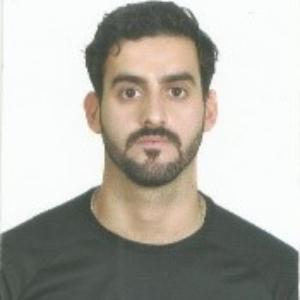Title : Biological skin tissue engineering
Abstract:
Introduction: The realm of biological skin tissue engineering has made significant strides in developing skin substitutes using biological materials. These advancements aim to closely mimic human native tissue in terms of structure, function, and integration within the host environment. This report delineates the categorisation of biological skin substitutes into natural, constructed, and cultured skin tissue engineering, underlining their potential treatment of various skin conditions.
Methods: The report adopts a comprehensive approach, examining various biological skin substitutes derived from allogeneic, xenogeneic, and autologous sources.
Results: Biological skin substitutes exhibit various material combinations and formulations. Allogeneic and xenogeneic tissues, despite their advantages, face challenges related to availability, risk of disease transmission, and immunological reactions. Autologous materials offer the closest resemblance to natural tissue but are limited by availability and patient conditions. Innovations in de-cellularization techniques and scaffold fabrication have enhanced the performance and biocompatibility of skin substitutes.
Conclusions: The development of biological skin substitutes represents a significant advancement in regenerative medicine, offering new avenues for treating complex skin injuries. While these substitutes provide promising alternatives to traditional skin grafts, challenges such as optimising tissue integration, scaling production, and addressing immunogenicity remain. Future research should focus on refining processing methods, enhancing scaffold design, and developing more effective strategies for cell sourcing and engineering to improve the efficacy and accessibility of skin substitutes.
Advances in Biological Skin Tissue Engineering: An Overview
Biological skin tissue engineering is at the vanguard of regenerative medicine, focusing on the development of skin substitutes that closely mimic the properties and functions of native human tissue. This field has made significant strides in creating skin replacements derived from allogeneic, xenogeneic, and autologous sources, which offer substantial improvements over traditional skin grafts. The core objective is to fabricate products that not only replicate the structural and functional characteristics of natural skin but also seamlessly integrate with the host's biological environment. By leveraging the capabilities of natural, constructed, and cell-based skin substitutes, this discipline is poised to revolutionize treatment outcomes for patients with a wide array of wound care requirements.
Natural Products and Decellularization Techniques
Natural tissue-engineered products are subjected to advanced decellularization techniques aimed at eliminating immunogenic components while preserving the extracellular matrix (ECM), which is crucial for cell adhesion and tissue development. Over the years, methods such as freeze-thaw cycles, enzymatic treatments, and mechanical agitation have been refined to create optimal scaffolds that facilitate the repopulation of host cells, thereby promoting tissue regeneration. A notable example is AlloDerm®[1], which uses aseptic procedures with buffered salt solutions for decellularization, demonstrating the effectiveness of these techniques in producing scaffolds that support robust tissue integration.
Constructed Devices and Scaffold Fabrication
Constructed biological products, including the Integra® Dermal Regeneration Template and MatriDerm®, represent significant advancements in skin tissue engineering[2, 3]. These devices are typically crafted from biocompatible materials like collagen and elastin hydrolysate, and undergo processes such as cross-linking to improve mechanical stability and reduce degradation rates. Techniques like lyophilization and electrospinning are pivotal in replicating the ECM of the skin, providing an ideal environment for cellular growth and tissue repair. The incorporation of cross-linking techniques and antimicrobials further enhances the clinical applicability of these scaffolds, highlighting the technical advancements in the construction of durable and effective skin substitutes.
Cell-based Engineering: Cultured and Point-of-Care Sources
Cell-based tissue engineering, exemplified by products such as Epicel® and Recell®, employs both autologous and allogeneic cell sources through cultured and point-of-care methodologies. Epicel® utilizes cultured keratinocytes to generate cell sheets for application on extensive burn wounds, illustrating the potential of bioreactor systems in cell proliferation and scaffold seeding[4, 5]. In contrast, Recell® adopts a point-of-care approach, wherein cells are harvested, processed, and applied to wounds directly in a surgical setting, demonstrating the adaptability and immediacy of cell-based therapies in real-time wound care scenarios[6, 7].
Conclusion
Biological skin tissue engineering is a cornerstone of regenerative medicine, offering promising avenues for the treatment and regeneration of damaged skin. The continuous development of natural and constructed skin products, coupled with advancements in cell-based therapies, has the potential to significantly enhance clinical outcomes. The future of this field relies on the integration of multidisciplinary research, clinical expertise, and technological innovation, which will undoubtedly lead to groundbreaking discoveries and improvements in patient care and quality of life.



